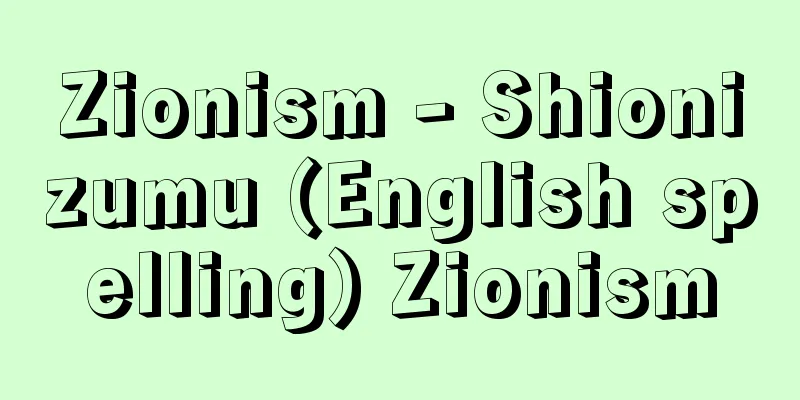Mahavairocana Sutra - Dainichikyo

|
A Buddhist scripture. It is an abbreviation of the Mahavairocana Sutra. Only the Chinese and Tibetan translations remain, and the original Sanskrit text has been lost. The Chinese translation was jointly translated by Shanwuwei and Icgyo (725) and consists of seven volumes and 36 chapters. The Tibetan translation was translated into seven volumes and 29 chapters between 750 and 760 by the Indian monk Sirendrabodhi and the Tibetan translator Bande Pertzek, but does not include the Chinese translation's "Offerings Chapter." There is no definite answer as to where in India the Mahavairocana Sutra was created. There are various theories, including Kapisha in Afghanistan, Nalanda in central India, Rātā in southwestern India, and Kashmir in northern India. There are also many different theories, both old and new, about when it was created, and the oldest theory is that it was created around 500, but this is somewhat too old, and the most straightforward theory is that it was created in the mid-7th century. Chinese and Japanese esotericists refer to esoteric Buddhism that has taken on an independent character since the 7th century as "pure esoteric" and distinguish it from esoteric Buddhism that was established before that as "mixed esoteric". One of the important scriptures of this pure esoteric, or pure and proper esoteric Buddhism, is the "Mahavairocana Sutra". The "Mahavairocana Sutra" is considered one of the three secret sutras of the Shingon sect, and together with the "Vajrasekhara Sutra" it is called the "two great sutras". The world of Buddha unfolding in the "Mahavairocana Sutra" is called the "Womb Realm", because the mandala that diagrams the world shown in this sutra is called the "Lotus Womb-Birth Mandala". The content of the sutra is that Mahavairocana Buddha (Mahavairocana) answers the questions of the secret master and explains the spirit, expression (expedient means), and practice (great compassion) of the secret mantra. Most of the sutra is detailed rules for the practice of rituals, which are called the Garbhadra Law. [Kanaoka Hidetomo] [References] |Source: Shogakukan Encyclopedia Nipponica About Encyclopedia Nipponica Information | Legend |
|
仏教経典。『大毘盧遮那(だいびるしゃな)成仏神変加持経(じょうぶっしんぺんかじきょう)』の略称。漢訳およびチベット訳だけが現存し、サンスクリット原典は失われている。漢訳は善無畏(ぜんむい)と一行(いちぎょう)の共訳(725)で七巻、36品(ほん)(章)からなる。チベット訳は、インド僧シーレンドラボーディとチベット訳官バンデ・ペルツェクによって、750年から760年の間に七巻、29品に訳されているが、漢訳の「供養(くよう)品」は含まれていない。『大日経』がインドのどこで成立したかについての確答は得られていない。アフガニスタンのカーピシャ(迦畢試国)、中インドのナーランダ、西南インドのラーター(羅荼国)、北インドのカシミールなどの諸説がある。また、いつ成立したかについても新古種々の説があり、もっとも古くみる説では500年ごろという説もあるが、やや古きにすぎ、7世紀の中ごろとみる説がもっとも難がない。 7世紀以後の、独立した性格を有するに至った密教を、中国・日本の密教家が「純密(じゅんみつ)」と称し、それ以前に成立した密教を「雑密(ぞうみつ)」と区別する。この純密、すなわち正純なる密教の重要なる経典の一つが『大日経』である。『大日経』は真言(しんごん)宗の三部秘経の一つとされ、『金剛頂経(こんごうちょうぎょう)』とあわせて「両部の大経」といわれる。『大日経』の展開する仏の世界は「胎蔵界」というが、これは、この経典の示す世界を図式化した曼荼羅(まんだら)が「蓮華胎蔵生(れんげたいぞうしょう)曼荼羅」とよばれるためである。経の内容は、大毘盧遮那仏(大日如来(にょらい))が秘密主の問いに答えて、秘密真言の心と表現(方便)と実践(大悲)とを説いたものであり、経の大部分は実践のための儀式の細則で、これを胎蔵法と称する。 [金岡秀友] [参照項目] |出典 小学館 日本大百科全書(ニッポニカ)日本大百科全書(ニッポニカ)について 情報 | 凡例 |
<<: Occupation policy towards Japan
>>: Counterparty funds for aid to Japan
Recommend
Hagoita - Hagoita
A toy for girls during the New Year. A board with...
Lotella maximowiczi (English spelling) Lotella maximowiczi
…[Hibiya Kyo]. . . *Some of the terminology that ...
Kisitsu Shushi
Years of birth: Years of birth and death unknown. ...
Nestor - Nestor (English spelling)
King Pylos in Greek mythology. He was a great med...
Tradescantia (English spelling) Tradescantia; spiderwort
A genus of the Commelinaceae family, with about 60...
Schnitger, FC (English spelling) SchnitgerFC
...German organ maker. After studying under B. Hu...
Ingot casting
The molten steel produced in various steelmaking f...
Nagatoro [town] - Nagatoro
A town in Chichibu County, western Saitama Prefect...
Fishery management entity
...Family-run businesses that own small fishing b...
Freedom and Civil Rights
A political movement in the early Meiji period tha...
Windowless poultry house - Windowless poultry house
A chicken coop with a closed, insulated structure ...
Inuyama Domain
Edo period , Owari Domain As a branch of Owari Pr...
Hybrid orbital
A linear combination of atomic orbitals in the gro...
U2 Incident - The U-2 Incident
On May 1, 1960, a high-performance American recon...
Ballet man
…Examples: Act 2 of Giselle, Les Sylphides. Balle...









